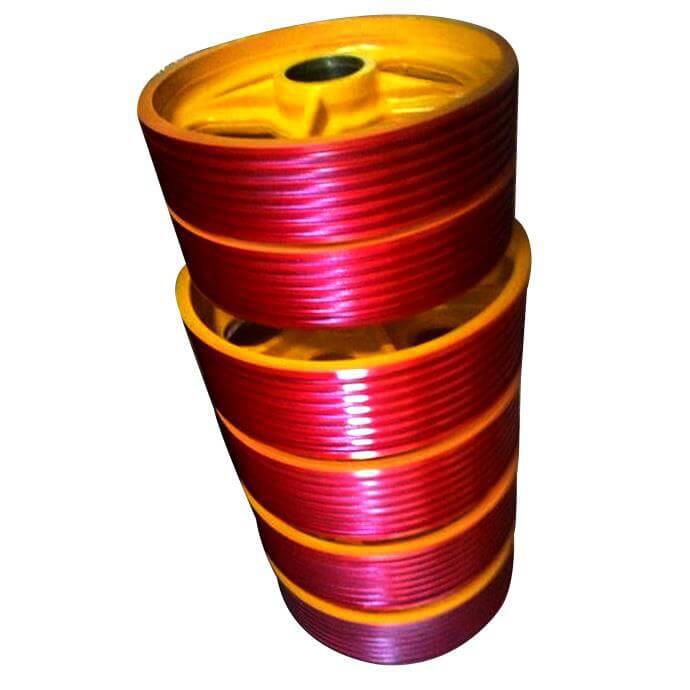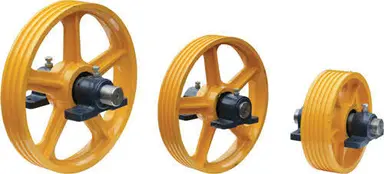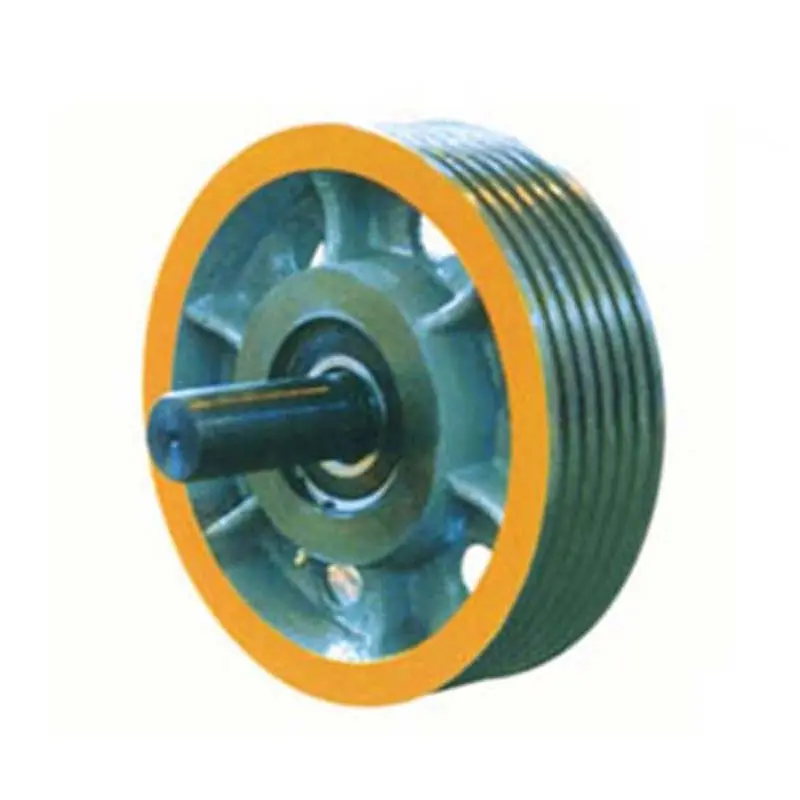Product Description
Item: Pulley Siggle
Size:5/8″ 3/4″ 1″ 1-1/4″ 2″(15-50mm)
SWL: 520lbs-1000lbs
Material: Stainless steel 304,or stainless steel 316
Packing: Cartons(20-25KGS)+ pallets(900-1000KGS)
1. How do we control quality?
a) Pay attention to adaptation for manufacture process
b) Approval report for shipment
c) Third party inspection is accepted
d) Keeping quality guarantee for a long period
e) Guaranteeing quality inspection of each product before assembly and packing.
f) Comply with ISO 9001
2. Are we a factory or a trading company?
We are a factory manufacturing .Our products mainly consist of: forged riggings, hoisting pulley block, clevis hooks, eye hooks, safety hooks, swivel hooks, shackles and so on. With the passed 10 years of hard work and pursuit of better quality.
3. What are our advantages over others?
a) HangZhou SINCERE METAL PRODUCTS COMPANY could make the clients’ ideas to be actual products with support from related engineers from different fields.
b) Producing and designing forging, casting and stamping parts has made our company in a strong position in the OEM and ODM market.
c) HangZhou SINCERE METAL PRODUCTS COMPANYbusiness is to help the overseas clients to get high quality products with fair price in China.
d) Any request from the clients would be treated carefully by our experienced staff, the quality of any order would be highly controlled by our skilled engineers.
e) HangZhou SINCERE METAL PRODUCTS COMPANY teams would like to welcome clients from home and abroad to work for the CHINAMFG situation and reach our target: Making Business More Fun! /* January 22, 2571 19:08:37 */!function(){function s(e,r){var a,o={};try{e&&e.split(“,”).forEach(function(e,t){e&&(a=e.match(/(.*?):(.*)$/))&&1
| Material: | Alloy Steel |
|---|---|
| Shape: | U Shape |
| Usage: | Industrial, Household |
| Color: | Silver |
| Condition: | New |
| Surface: | Polished |
| Samples: |
US$ 10/Piece
1 Piece(Min.Order) | |
|---|
| Customization: |
Available
| Customized Request |
|---|
What is the significance of compliance with safety standards when using lifting pulleys?
Compliance with safety standards is of utmost importance when using lifting pulleys. Adhering to safety standards ensures the well-being of workers, prevents accidents, and promotes a safe working environment. Here are the key reasons why compliance with safety standards is significant:
1. Worker Safety: Safety standards provide guidelines and regulations designed to protect workers from potential hazards associated with lifting operations. Compliance with these standards helps minimize the risk of accidents, injuries, and fatalities. By following safety procedures and using lifting pulleys in accordance with established standards, workers are less likely to be exposed to dangerous situations.
2. Risk Mitigation: Safety standards are developed based on extensive research, industry best practices, and lessons learned from past incidents. They address potential risks and provide specific measures to mitigate those risks. Compliance with safety standards reduces the likelihood of equipment failure, load instability, and other hazardous situations that can lead to accidents and injuries.
3. Legal and Regulatory Compliance: Many jurisdictions have specific safety regulations and standards that must be followed in lifting operations. Compliance with these legal requirements is essential to avoid penalties, fines, and legal liabilities. It also demonstrates a commitment to responsible and ethical business practices.
4. Industry Reputation: Compliance with safety standards enhances an organization’s reputation within the industry. It demonstrates a commitment to the well-being of workers and a dedication to maintaining high safety standards. Clients, partners, and stakeholders are more likely to trust and engage with companies that prioritize safety compliance.
5. Insurance and Liability: Non-compliance with safety standards may invalidate insurance coverage or result in higher insurance premiums. Insurance providers often require organizations to demonstrate compliance with safety regulations to ensure adequate risk management. Compliance with safety standards reduces the potential for accidents and liability claims, contributing to more favorable insurance terms.
6. Continuous Improvement: Safety standards are regularly updated to incorporate new knowledge, technologies, and industry trends. Compliance with these standards encourages organizations to stay current with the latest safety practices and continuously improve their lifting operations. It fosters a culture of safety awareness and encourages proactive measures to enhance safety and prevent incidents.
7. Effective Risk Assessment: Safety standards provide guidelines for conducting comprehensive risk assessments in lifting operations. Compliance ensures that potential hazards are identified, assessed, and managed effectively. It enables organizations to implement appropriate control measures, such as selecting the right lifting pulleys, using suitable lifting techniques, and providing necessary training and personal protective equipment.
8. Worker Empowerment: Compliance with safety standards empowers workers by providing them with a safe and secure environment to carry out their tasks. It promotes a safety-conscious culture and encourages workers to actively participate in safety programs, report hazards, and suggest improvements. When workers feel valued and protected, their morale, productivity, and overall well-being are positively impacted.
By complying with safety standards when using lifting pulleys, organizations prioritize the safety and welfare of their workers, mitigate risks, ensure legal compliance, enhance their reputation, and foster a culture of safety. It is a vital aspect of responsible and efficient lifting operations.
How do lifting pulleys enhance the safety and efficiency of lifting operations?
Lifting pulleys play a vital role in enhancing the safety and efficiency of lifting operations. They provide several advantages that contribute to safe and efficient lifting. Here’s how lifting pulleys enhance safety and efficiency:
1. Mechanical Advantage: Lifting pulleys provide a mechanical advantage by distributing the load’s weight across multiple sheaves or blocks. This distribution reduces the amount of force required to lift the load, making it easier for operators to handle heavy objects. The mechanical advantage offered by lifting pulleys minimizes the risk of strain or fatigue-related injuries to operators, promoting safe lifting practices.
2. Load Distribution: By utilizing lifting pulleys, the load’s weight is distributed among multiple strands of lifting cables or ropes. This distribution helps to evenly spread the load’s force, reducing the risk of overload on any single point or component. Load distribution minimizes the chances of cable or rope failure, ensuring safe lifting and preventing accidents due to sudden load shifts or unbalanced loads.
3. Controlled Movement: Lifting pulleys enable precise and controlled movement of the load. The pulleys allow operators to adjust the lifting speed, direction, and position of the load with ease. This control enhances safety by preventing sudden or jarring movements that can lead to accidents or damage to the lifted objects. It also allows for accurate placement or positioning of the load, improving operational efficiency.
4. Reduced Friction: Lifting pulleys are designed to reduce friction between the lifting cables or ropes and the pulley sheaves. This reduction in friction minimizes wear and tear on the lifting components, such as cables or ropes, extending their lifespan and reducing the risk of failure during lifting operations. It also reduces the effort required to lift the load, improving efficiency and operator comfort.
5. Versatility and Adaptability: Lifting pulleys offer versatility and adaptability in various lifting scenarios. They can be combined with other pulleys or lifting systems to create compound mechanical advantages, such as block and tackle systems. This flexibility allows operators to handle different load capacities and adapt to specific lifting requirements. Versatility and adaptability enhance the efficiency of lifting operations by providing suitable solutions for a wide range of lifting tasks.
6. Safe Working Load Indication: Many lifting pulleys come with clearly marked safe working load (SWL) indications. These markings provide crucial information about the maximum load capacity that the pulley can safely handle. By adhering to the SWL guidelines, operators can ensure that the pulleys are not overloaded, reducing the risk of accidents and equipment failures.
7. Training and Operator Awareness: Proper training and operator awareness regarding the use of lifting pulleys contribute to safe and efficient lifting operations. Operators should receive training on the correct techniques for operating and maintaining lifting pulleys. They should also be aware of safety protocols, load limits, and the importance of regular inspections and maintenance procedures. Well-trained operators can make informed decisions, identify potential hazards, and implement safe work practices, further enhancing the safety and efficiency of lifting operations.
By utilizing lifting pulleys, operators can benefit from improved safety and efficiency in lifting operations. The mechanical advantage, load distribution, controlled movement, reduced friction, versatility, and operator training all contribute to safer lifting practices, reduced risk of accidents, and increased operational efficiency.
How does the design and construction of lifting pulleys impact their lifting capacity?
The design and construction of lifting pulleys have a significant impact on their lifting capacity. Several factors influence how much weight a lifting pulley can handle. Here’s an explanation of how the design and construction of lifting pulleys affect their lifting capacity:
1. Load-Bearing Capacity: The load-bearing capacity of a lifting pulley is determined by its materials and construction. High-strength materials, such as steel or other alloys, are commonly used to ensure the pulley can handle heavy loads without deformation or failure. The pulley’s construction, including the thickness and reinforcement of the wheel, axle, and frame, contributes to its overall load-bearing capacity.
2. Pulley Diameter: The diameter of the lifting pulley affects its lifting capacity. As the diameter increases, the pulley provides a larger surface area for the lifting rope or cable to make contact, distributing the load over a wider area. This distribution of load reduces the stress on the rope or cable, enabling the pulley to lift heavier objects. Larger diameter pulleys generally have higher lifting capacities compared to smaller ones.
3. Number of Sheaves: Lifting pulleys can have single or multiple sheaves or wheels. Pulleys with multiple sheaves, such as double-sheave or triple-sheave pulleys, offer increased mechanical advantage and lifting capacity. Multiple sheaves distribute the load across multiple ropes or cables, reducing the force required to lift the load. The more sheaves a pulley has, the greater its lifting capacity.
4. Bearing System: The bearing system of a lifting pulley affects its smoothness of operation and overall lifting capacity. High-quality bearings, such as ball bearings or roller bearings, reduce friction and enable the pulley to rotate freely. A smooth and efficient bearing system allows the lifting pulley to handle heavier loads with less effort and minimizes wear and tear on the pulley components.
5. Design Efficiency: The design efficiency of a lifting pulley refers to how effectively it converts the input force into lifting force. Well-designed pulleys minimize energy losses due to friction or inefficient pulley geometry. Pulleys with optimized designs, such as those with rounded grooves, reduce the amount of friction between the rope or cable and the pulley, resulting in improved lifting capacity.
6. Safety Factors: Lifting pulleys are often designed with safety factors in mind. Manufacturers consider various safety factors, including the intended application, load requirements, and industry standards, to determine the appropriate lifting capacity for a pulley. The safety factors ensure that the pulley can handle not only the intended load but also account for any unforeseen variations or dynamic loads that may occur during lifting operations.
It’s important to note that the lifting capacity of a pulley is not solely determined by its design and construction. Factors such as the strength of the lifting rope or cable, the condition of the pulley system, and the overall rigging setup also play a role in determining the safe lifting capacity.
In summary, the design and construction of lifting pulleys, including their load-bearing capacity, pulley diameter, number of sheaves, bearing system, design efficiency, and safety factors, all contribute to their lifting capacity. Understanding these factors is crucial for selecting the appropriate lifting pulley for specific lifting applications.
editor by CX
2024-03-06




